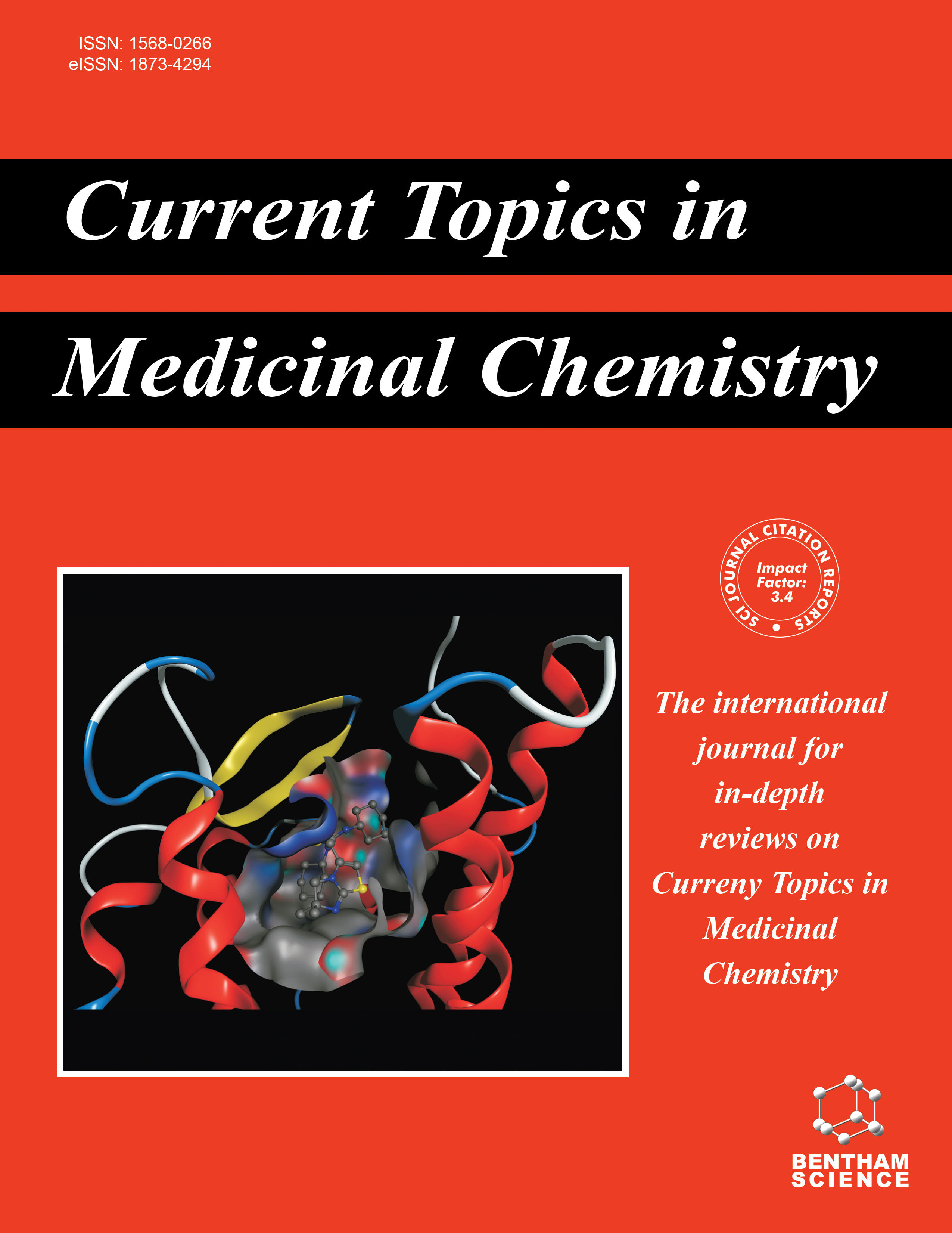- Home
- A-Z Publications
- Current Topics in Medicinal Chemistry
- Previous Issues
- Volume 16, Issue 25, 2016
Current Topics in Medicinal Chemistry - Volume 16, Issue 25, 2016
Volume 16, Issue 25, 2016
-
-
Targeting Allosteric Control Mechanisms in Heat Shock Protein 70 (Hsp70)
More LessAuthors: Xiaokai Li, Hao Shao, Isabelle R. Taylor and Jason E. GestwickiHeat shock protein 70 (Hsp70) is a molecular chaperone that plays critical roles in protein homeostasis. Hsp70’s chaperone activity is coordinated by intra-molecular interactions between its two domains, as well as inter-molecular interactions between Hsp70 and its co-chaperones. Each of these contacts represents a potential opportunity for the development of chemical inhibitors. To illustrate this concept, we review three Read More
-
-
-
Neurodegeneration and the Heat Shock Protein 70 Machinery: Implications for Therapeutic Development
More LessAuthors: Sarah N. Fontaine, Mackenzie D. Martin and Chad A. DickeyThe growing prevalence of individuals diagnosed with neurodegenerative disorders has brought into sharp relief the lack of treatment options for individuals struggling with these diseases. As more is discovered about the mechanisms of these neurodegenerative conditions, increasing evidence indicates a common theme in these proteinopathies is altered cellular protein homeostasis. In particular, the interactions of disease-ass Read More
-
-
-
Heat Shock Protein (HSP) Drug Discovery and Development: Targeting Heat Shock Proteins in Disease
More LessAuthors: Liza Shrestha, Alexander Bolaender, Hardik J. Patel and Tony TaldoneHeat shock proteins (HSPs) present as a double edged sword. While they play an important role in maintaining protein homeostasis in a normal cell, cancer cells have evolved to co-opt HSP function to promote their own survival. As a result, HSPs such as HSP90 have attracted a great deal of interest as a potential anticancer target. These efforts have resulted in over 20 distinct compounds entering clinical evaluation for the tr Read More
-
-
-
Clients and Oncogenic Roles of Molecular Chaperone gp96/grp94
More LessAs an endoplasmic reticulum heat shock protein (HSP) 90 paralogue, glycoprotein (gp) 96 possesses immunological properties by chaperoning antigenic peptides for activation of T cells. Genetic studies in the last decade have unveiled that gp96 is also an essential master chaperone for multiple receptors and secreting proteins including Toll-like receptors (TLRs), integrins, the Wnt coreceptor, Low Density Lipoprotein Rec Read More
-
-
-
Paralog Specific Hsp90 Inhibitors – A Brief History and a Bright Future
More LessBackground. The high sequence and structural homology among the hsp90 paralogs – Hsp90α, Hsp90β, Grp94, and Trap-1 – has made the development of paralog-specific inhibitors a challenging proposition. Objective. This review surveys the state of developments in structural analysis, compound screening, and structure-based design that have been brought to bear on this problem. Results. First generation compounds Read More
-
-
-
Targeting Hsp90 in Non-Cancerous Maladies
More LessAuthors: Mark R. Woodford, Diana M. Dunn, Joseph G. Ciciarelli, Kristin Beebe, Len Neckers and Mehdi MollapourHeat shock protein–90 (Hsp90) is a molecular chaperone critical to the folding, stability and activity of over 200 client proteins including many responsible for tumor initiation, progression and metastasis. Hsp90 chaperone function is linked to its ATPase activity and Hsp90 inhibitors interfere with this activity, thereby making Hsp90 an attractive target for cancer therapy. Also post-translational modification (PTM) and co-chape Read More
-
-
-
Hsp90 Inhibitors in Parasitic Nematodes: Prospects and Challenges
More LessAuthors: Eileen Devaney and Victoria GillanHsp90 inhibitors are well characterized in relation to their effects in a variety of tumors, with several inhibitors in various phases of clinical development. In recent years, the same inhibitor classes have been tested for efficacy in other systems, such as Alzheimer’s disease and a variety of infectious disease models, including fungal and parasitic targets. In this article we discuss the repurposing of Hsp90 inhibitors for para Read More
-
-
-
Function and Chemotypes of Human Hsp70 Chaperones
More LessAuthors: Liza Shrestha and Jason C. YoungIn humans, Hsp70 chaperones are ubiquitously expressed in the cytosol, endoplasmic reticulum and mitochondria. They fulfill important roles in protein folding and the protection of cells from stress. Different forms of Hsp70 have also been found to regulate specific signaling pathways, many related to cell death. Cancer cells are notably abnormally dependent on Hsp70 chaperones for their survival. The importance of Hsp70s Read More
-
-
-
Stressing Out Hsp90 in Neurotoxic Proteinopathies
More LessAuthors: Carmen Inda, Alexander Bolaender, Tai Wang, Srinivasa R. Gandu and John Koren IIIA toxic accumulation of proteins is the hallmark pathology of several neurodegenerative disorders. Protein accumulation is regularly prevented by the network of molecular chaperone proteins, including and especially Hsp90. For reasons not yet elucidated, Hsp90 and the molecular chaperones interact with, but do not degrade, these toxic proteins resulting in the pathogenic accumulation of proteins such as tau, in Alzheimer’s Di Read More
-
Volumes & issues
-
Volume 25 (2025)
-
Volume 24 (2024)
-
Volume 23 (2023)
-
Volume 22 (2022)
-
Volume 21 (2021)
-
Volume 20 (2020)
-
Volume 19 (2019)
-
Volume 18 (2018)
-
Volume 17 (2017)
-
Volume 16 (2016)
-
Volume 15 (2015)
-
Volume 14 (2014)
-
Volume 13 (2013)
-
Volume 12 (2012)
-
Volume 11 (2011)
-
Volume 10 (2010)
-
Volume 9 (2009)
-
Volume 8 (2008)
-
Volume 7 (2007)
-
Volume 6 (2006)
-
Volume 5 (2005)
-
Volume 4 (2004)
-
Volume 3 (2003)
-
Volume 2 (2002)
-
Volume 1 (2001)
Most Read This Month
Article
content/journals/ctmc
Journal
10
5
false
en


